The meal was a hymn to everything Gower. Canapes of welsh rarebit made with Gower Gold ale, and umami-rich pots of cockles with cheese, bacon and an ingredient I was newly converted to – laverbread (not bread but seaweed).
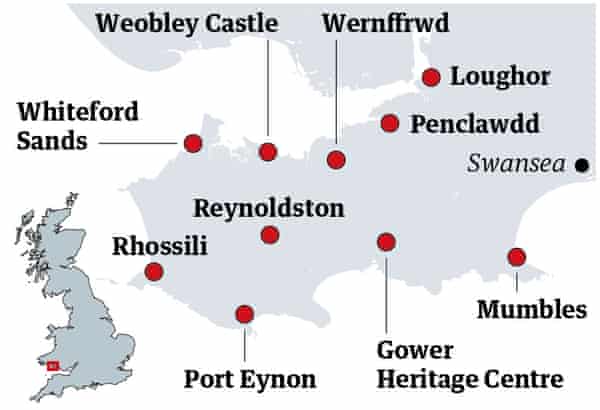
Then came fat asparagus from Manselfold Farm, a couple of miles from our Airbnb, and perhaps the peninsula’s best-known speciality, saltmarsh lamb baked overnight, with bone marrow gravy, roasties and no fewer than six fresh vegetables from Murton Farm, a few miles in the other direction. Dessert included gooey brownies laced with sloe gin from the Gower Gin Company.
The conjuror of this feast of Welshness was Greek. Chef Christos Georgakis first cooked at his father’s taverna in Piraeus, but has been making the most of Gower ingredients since settling here 20 years ago, winning awards for best pub food – at the King Arthur in the village of Reynoldston – and reaching the semi-finals of MasterChef: The Professionals.
During lockdown he offered takeaways and now works as a private chef (four courses from £50pp), which has proved a popular Covid-safe option with holidaymakers like us – no mingling in busy restaurants, no babysitter, no driving.
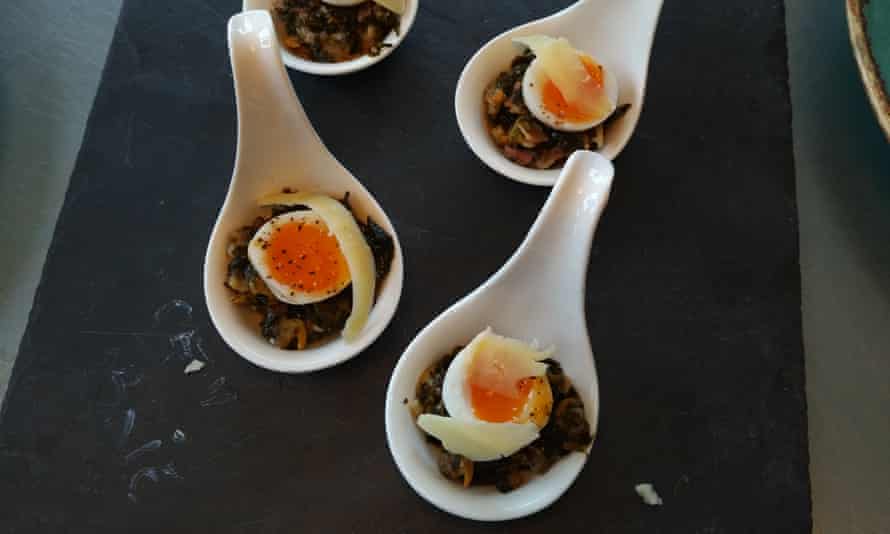
The Gower peninsula has a long history of good food, thanks to fertile farmland, mild winters and miles of coast, and was self-sufficient until the 20th century, as road links were so poor. But we’d been drawn to this fist of land west of Swansea by a mini explosion of new foodie ventures combining traditional produce with prime 21st-century flavours: seasonal, organic, low-carbon…
The arrival of Covid, at a time when several of them had barely got going, was a blow, but the mood among proprietors was buoyant as a domestic tourism boom and massive demand for truly local products looked set to keep everyone busy after lockdown regulations were lifted.

In October 2019, Matt Heaven and George Cooke fulfilled a longing to translate the low-fuss east London bistro idea to south Wales when they opened restaurant Môr (it means sea) in what had been an unremarkable Chinese on Mumbles seafront. Despite prices higher than average for Swansea (three courses about £45), it was a hit, as people saw the value of what they were doing: making friends with fishers and farmers, shaping their menu around their best ingredients.
They have several “lobster guys”, scallops come from the island of Lundy, and a local fishmonger alerts them when he’s “going bassing” off a Gower beach. The food may be high-end, but the vibe is informal – our friendly waitress was in cycle shorts and a Hawaiian shirt. A surprise success in Elwyn, the bar they added up the road in 2020, was an ox-tongue sandwich, suggested by their butcher. Its chewy, house-made crisps were fantastic too.
Mumbles could be the new Padstow, said Matt and George, who raved about the Iraqi kebab shop a few doors away, with authentic Basra tabbouleh and hummus. This part of town is called Oystermouth, for its shellfish history, and oysters recently reseeded in the bay by Mumbles Oyster Company should come on stream in a couple of years (until then, Môr’s oysters come from the Menai Strait). The opening of a 16-room boutique hotel at Oyster Wharf later this year could seal the deal.

We self-catered at the brand-new Snugl, a smart, secluded studio – you’d never know it was once a garage – in Reynoldston, handy for many foodie attractions. Wild ponies graze the moorland around here, and from Arthur’s Stone, a 15-minute walk away, views stretch south past Oxwich Bay to Lundy and north to the Burry estuary.
South Gower’s beaches are stunning, but for food lovers the north shore, with its miles of marsh, is a big draw. We were too early to gather samphire at Whiteford Sands, with its cast-iron, wave-washed lighthouse, but enjoyed watching the tide-canny sheep browsing the rough ground.

The home of Gower saltmarsh lamb, 14th-century Weobley Castle, is an attraction in its own right. Will Pritchard and family raise 1,500 lambs a year on marsh below the castle, the animals’ diet of sea lavender, sorrel and samphire giving the meat a unique flavour. The castle ruins remain officially closed but those visiting the shop can wander informally around its walls and keeps. In normal years it’s an atmospheric setting for folk and beer festivals – perhaps in 2022. The lamb sells out every year, with new-season meat available from July.
High-quality lamb would once have been only for the rich, but a few miles east in Wernffrwd is a shrine to what ordinary folk ate – cockles and seaweed. Records show the Jones family firm, Selwyn’s Seafoods, first paid tax in 1950, but at the cafe and visitor centre they opened last smmer, Brian Jones told me his ancestors had gathered cockles from the estuary long before then.
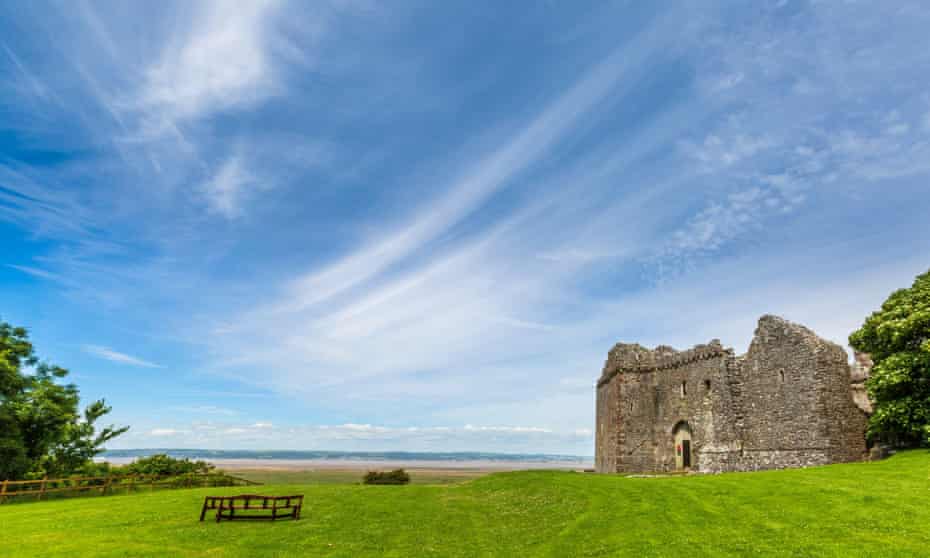
A photograph on the wall showed his mum, now nearly 90, who “has picked more cockles than anyone”, bent double with rake and riddle as a young woman. The crustaceans – still small when we were there in chilly May – are traditionally eaten with vinegar and pepper, and also available at Gower chippies such as the Roma Fish Bar in Penclawdd.
Selwyn’s also sells what Richard Burton called “Welshman’s caviar” – laverbread, made from Gower seaweed; but a slimy, dark green blob with your Welsh breakfast is challenging at first. It may have kept daylight-starved miners healthy, but I found it more acceptable the wimp’s way: on sourdough toast with cockles at the Plough & Harrow pub in Murton. Selwyn’s now also has a machine from Japan to dry the algae into seaweed snacks – moreish, healthy tasting and sold in packets like crisps. What next, Gower sushi?
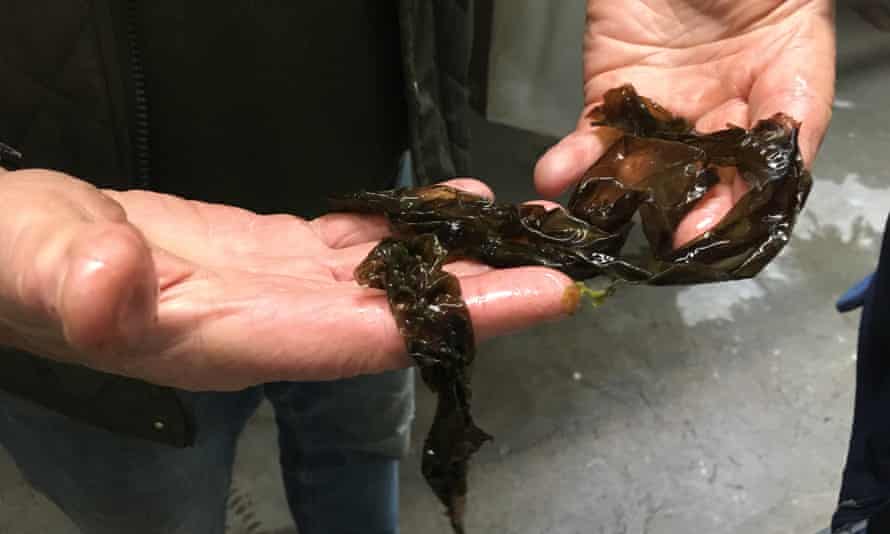
Great food culture needs great agriculture, and a Gower tour can take in several inspiring farms. In the far south-west, the Wales Coast Path runs through Paviland Farm, where the Harry Thomas family’s dedication to “regenerative farming” also has benefits for visitors. Its switch away from intensive methods has seen the clifftops become more walkable, thanks to free-range Welsh Black cattle trampling the brambles and bracken and allowing wildflowers to reappear. GPS collars keep the beasts from getting too near to humans!
Information boards explain how diversifying into organic fruit, veg, buckwheat, quinoa and pumpkins allows more integrated farming that offsets lower yields. Its oats, for example, go into locally made vegan ice-cream. Check @pavilandfarm for open days – the first is in September.
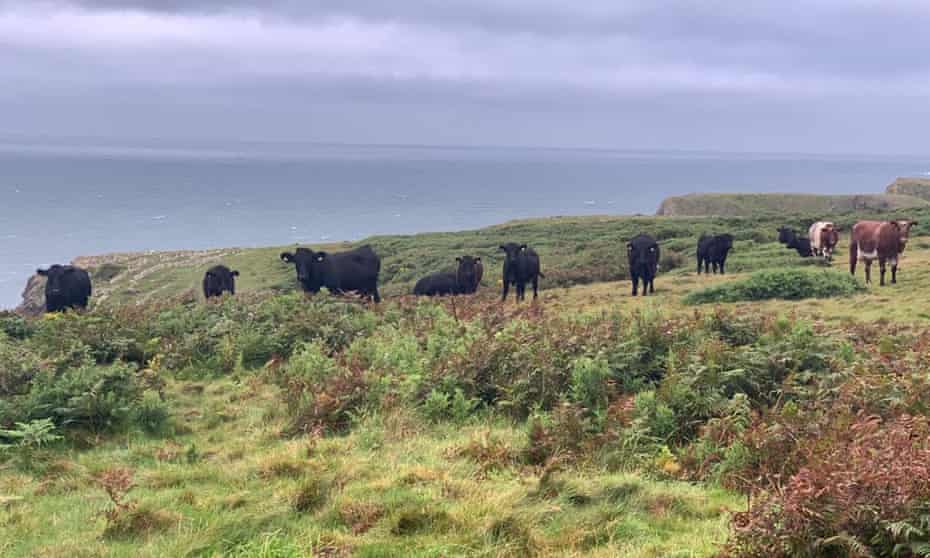
One crop brought unexpected consequences last summer. Chris Harry Thomas planted sunflowers – for oil and bird food – on National Trust land near Rhossili. The flowers became a social media sensation, with people coming for miles to snap themselves among fields of gold. Gower Seafood Hut, from Mumbles seafront, set up an outpost here to feed the crowds, whose £4 parking fees put the whole southern department of Wales National Trust on a firm financial footing. The sunflowers will be in bloom again from mid-July.
Liam Connick does similar work on smaller Killan Fach Eco farm, keeping pigs, sheep and hardy Black Rock hens, and producing solar power for sale to local households. Visitors are invited to walk a nature trail from its gate, with information boards and an honesty box selling duck, goose and hen eggs. His next plan is to add some glamping units.

Just as impressive are self-taught young locals Billy and Tash of Bogan’s Bakery, who have been making sourdough loaves, croissants and pastries at their house in Loughor since December and sell out every day. Changing products each month – including a raspberry and almond swirl in summer – they deliver to holiday homes, campsites and bakeries (order on Facebook or WhatsApp).
A good place to see several food champions in one place is Gower Heritage Centre, based at a 12th-century watermill restored to grind Killan Fach’s grain. We browsed its Saturday makers’ market for gooey brownies (made with Liam’s eggs and local butter) by Tir a Môr Bakes, goat’s cheese from recent arrivals Alun and Angela of Wobbly Bottom Cheeses and relishes from food historian Chendore Luan, who also offers bread, pickle and cheese-making classes, when permitted. More features are reopening each month, so check online.
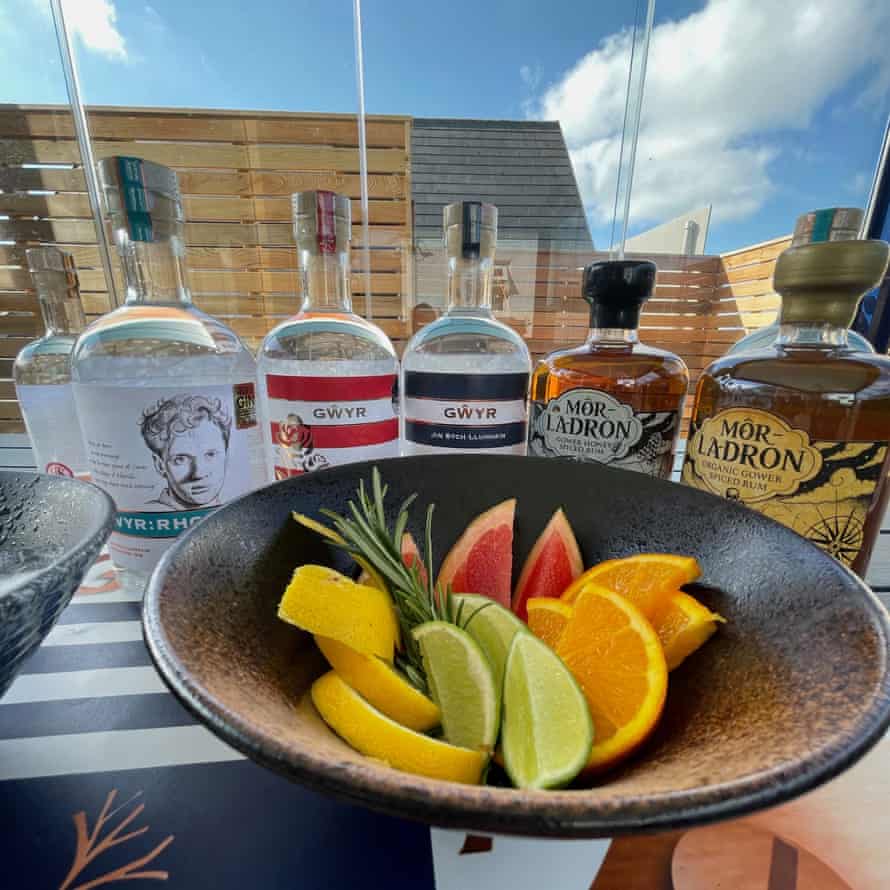
On our last day, we got in the mood for Christos’s feast at another relative newcomer. Gower Gin Company opened in pretty Port Eynon in 2017, and its converted bike shed claims to be the UK’s smallest micro-distillery. The weather being wet, we were glad of the glass-walled tasting room in owners Siân & Andrew Brooks’s sea-view “gin garden”, where we spent a giddy hour trying six award-winning gins: my favourites were Dylan Thomas-themed Rhosili, with foraged sea buckthorn, gorse and linden flower, and a Christmassy Bara Brith variety. Book free tastings online.
We raised the last glass with a “Iechyd da!” – wishing “good health” to all the passionate producers safeguarding Gower’s food future.
More Gower food and drink favourites
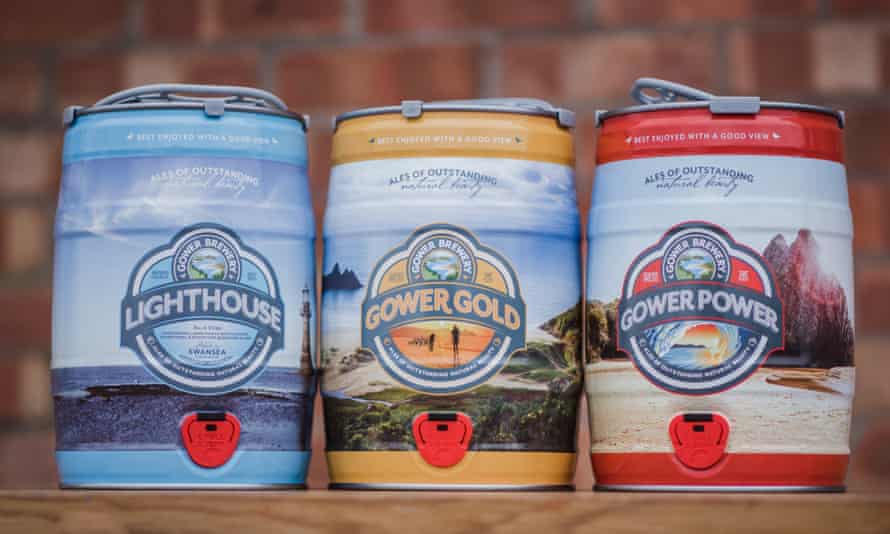
Look out in shops for Welsh Brew tea, from a Mumbles company that blends Assam and Kenyan Red varieties to make a perfect cuppa with soft Welsh water.
Sally “Cupcake” Steadman opened her Gower home bakery in 2019 and will deliver scones with clotted cream, Welsh cakes or a bespoke birthday cake to holiday homes.
Ask any local and they’ll say their favourite beer is Gower Gold, from Gower Brewery in Crofty, made with barley from Paviland Farm. The brewery also recently added GG Gelato, made with Paviland fruit and sold at an ice-cream parlour next to its Estuary Bar and Rooms in Penclawdd, opened in 2019.
If you’re coming to Gower from the north, stock up on udder-fresh un-homogenised milk at Llaeth Beynon in Llanelli. When orders from coffee chains dried up in lockdown, the farm started selling its milk from a vending machine just off the M4, in reusable glass bottles. Going for a contactless milkshake from its machines became a lockdown sensation.




